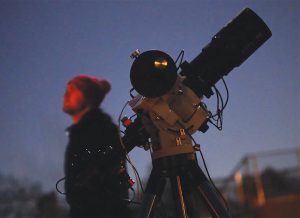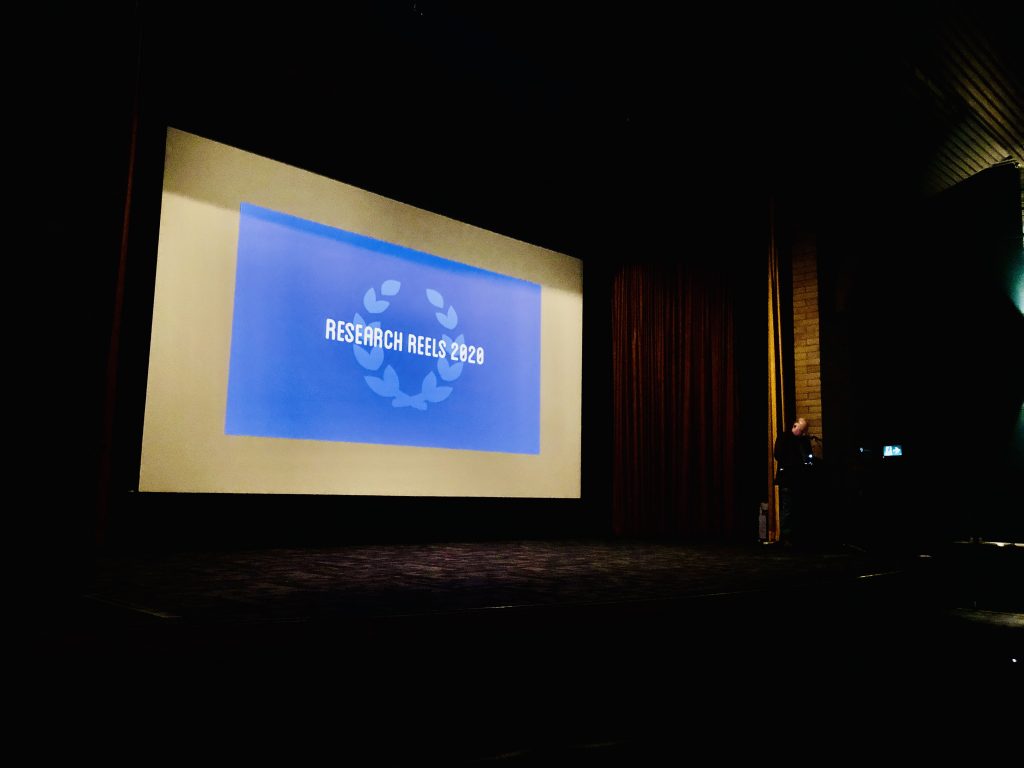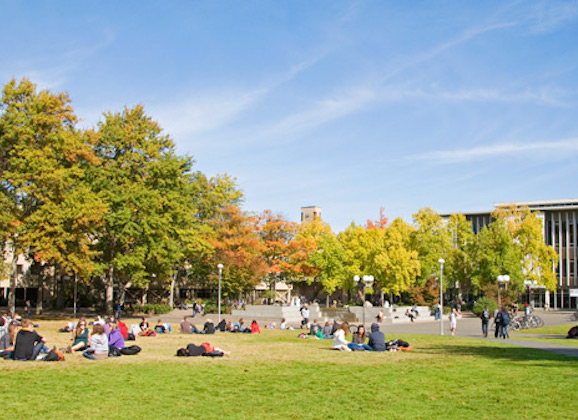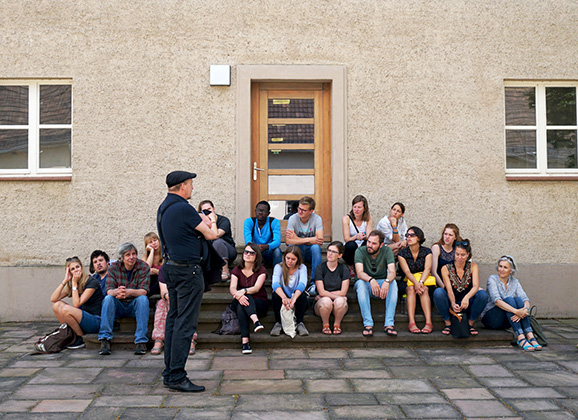Students Turn the Camera on Research in Research Reels
What do parasitic worms, third-world mapping projects, and VR language-learning apps have in common? They were all the subject of Research Reels videos at last Monday’s kick-off Ideafest event!
This annual showcase celebrates a juried selection of the best submissions from the Research Reels competition, which features UVic research that makes a vital impact.
Research Reels show off student and faculty research in approachable, well-shot videos that clock in under 3 minutes in length. The event, now in its fourth year, is a favorite amongst Ideafest coordinators. “My favorite part of running the program is getting to see the interesting research that’s happening across campus,” says Research Reels coordinator Beth Doman. “We don’t really hear about [this research] that’s part of undergraduate and graduate students’ lives every day.”
With 2019 Research Reels videos racking up more than 80,000 views on Facebook alone since fall 2019, it’s clear that submitting a Research Reel could earn you some serious recognition on campus. But it’s about more than that, Doman adds: “Potential co-op employers, decision-makers, and other thought-leaders see [these] videos. Student video producers often make connections to further their careers or research projects as a result of becoming “UVic famous.””
The Monday night event enjoyed a hearty turnout at the Cinecenta theatre in the Student Union Building, with teams of researchers and filmmakers from all 13 Research Reels featured in attendance. The audience buzzed with the sound of excited dialogue and the crunching of free popcorn.
Our host, brain health researcher Olav Krigolson, explained that the videos were judged on several criteria: flow and coherency, adherence to the principles of UVic Edge (dynamic learning, vital impact, and extraordinary environment), the filmmaker’s overall creativity, the technical merit of the final product, and the overall impact of the video.
The three judges, UVic chemical oceanographer Jay Cullen, Indigenous filmmaker Barbara Todd Hager and video producer Mike Walker had already made their first and second prize selections, but the $1,000 of prize money for People’s Choice (first and second prize) had yet to be decided.
My first impression of the videos was the amazing blend between artistic and scientific collaboration. It wasn’t enough to profile an incredible researcher; there had to be an artist behind the camera who could tell their story, as well as an adept cinematographer to capture it. The narrative and flow of each video counted as much as the content within.
I was also struck by just how much I learned about UVic on-campus research that I never knew about before. From The Mapathon, I learned that teams of UVic geography students are helping to increase mapping data (think Google Maps) in underdeveloped countries in order to increase public safety.
Through watching Parasitic Worms, I learned how researchers in the Reynolds Laboratory are examining how parasitic worms give symbiotic immune system benefits to their hosts, and how scientists are seeking to isolate these immune benefits.
I was fascinated by an augmented-reality language-learning app (the subject of AR Collaborative Language Learning) that would take French-language learners around the UVic campus, Pokemón Go-style, to interact in French with game challenges based around real-life campus features like the McPherson Library.
All of the videos took an admirable look at incredible research, and every team deserved to be recognized for their hard work. At the end of the showcase, the judges awarded second prize and $1,000 to English-major filmmaker Julian Sketchley for his video, Parasitic Worms. The judges awarded first prize and $2,000 to Kyle Nelson, the researcher and filmmaker behind Charismatic Minifauna on the Move, an intimate and beautifully-shot video about his research netting bats and studying their migration activities.
The audience loved three videos so much that two $250 prizes were awarded for People’s Choice in the second-place category: Kyle Nelson split the prize with Taya Sparks, who won for her video Concussion Lab, which profiled UVic research on the cognitive functions of adults with a concussion history.
Finally, a $750 People’s Choice first prize was awarded to Bryce Edwards for his video ORCASat Project, which followed the collaborative work of UVic researchers, undergraduates, and graduate students on UVic’s very own satellite, launching in 2021, that will help measure interference from dark energy in space.
Throughout the showcase, I found myself losing journalistic focus and becoming engrossed in each video. Although some were incredibly niche, every single video took a fascinating subject and made it more accessible.
For any current readers that are itching for a chance to submit for next year’s Research Reels, Doman says her door is always open to any student who has questions about how to make their reel. “There are a lot of resources available to students in terms of learning, [and] equipment, and they can reach out to me for guidance…[it] doesn’t need to be an intimidating process. ”
$4,000 in prize money, a chance to see your video on the big screen, and honing your videography skills in the process? Sounds like a reel great opportunity to me.







